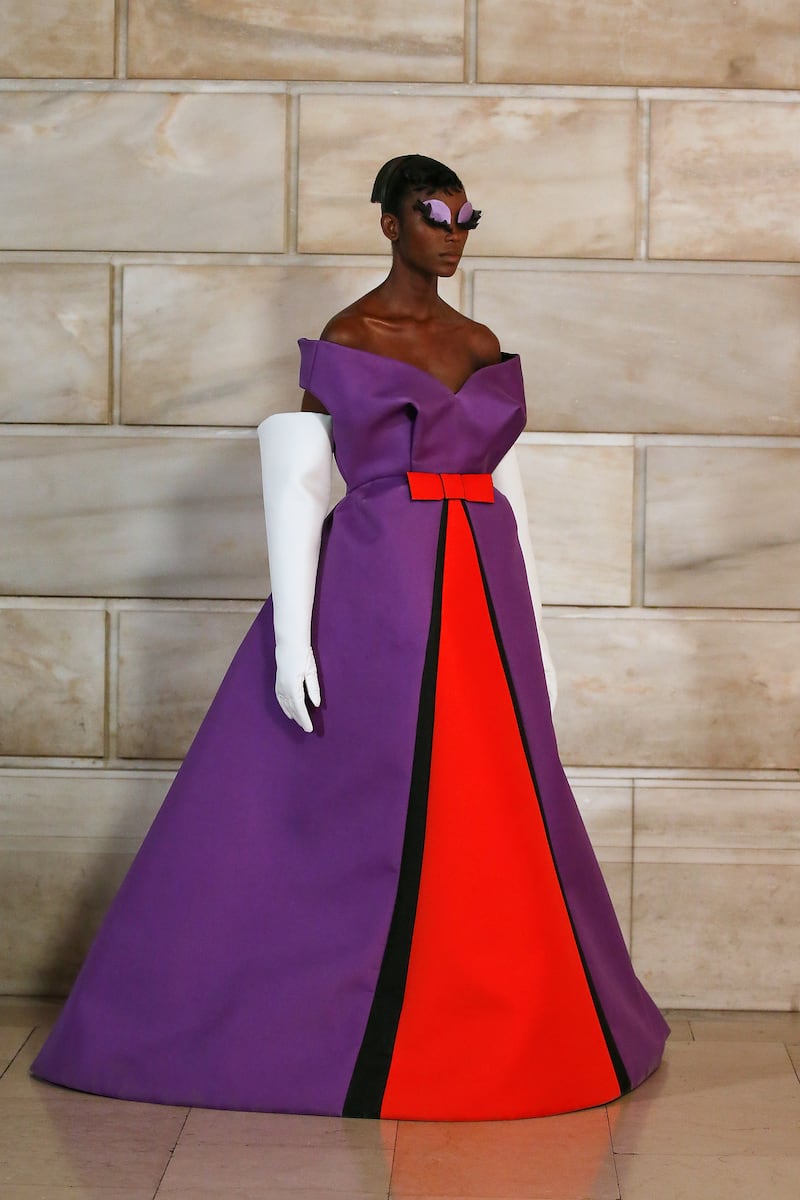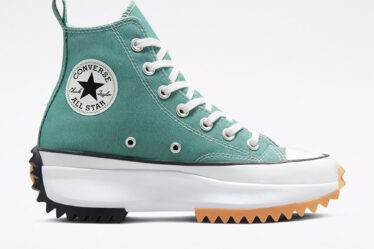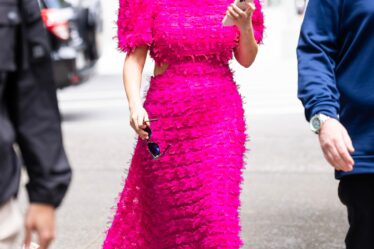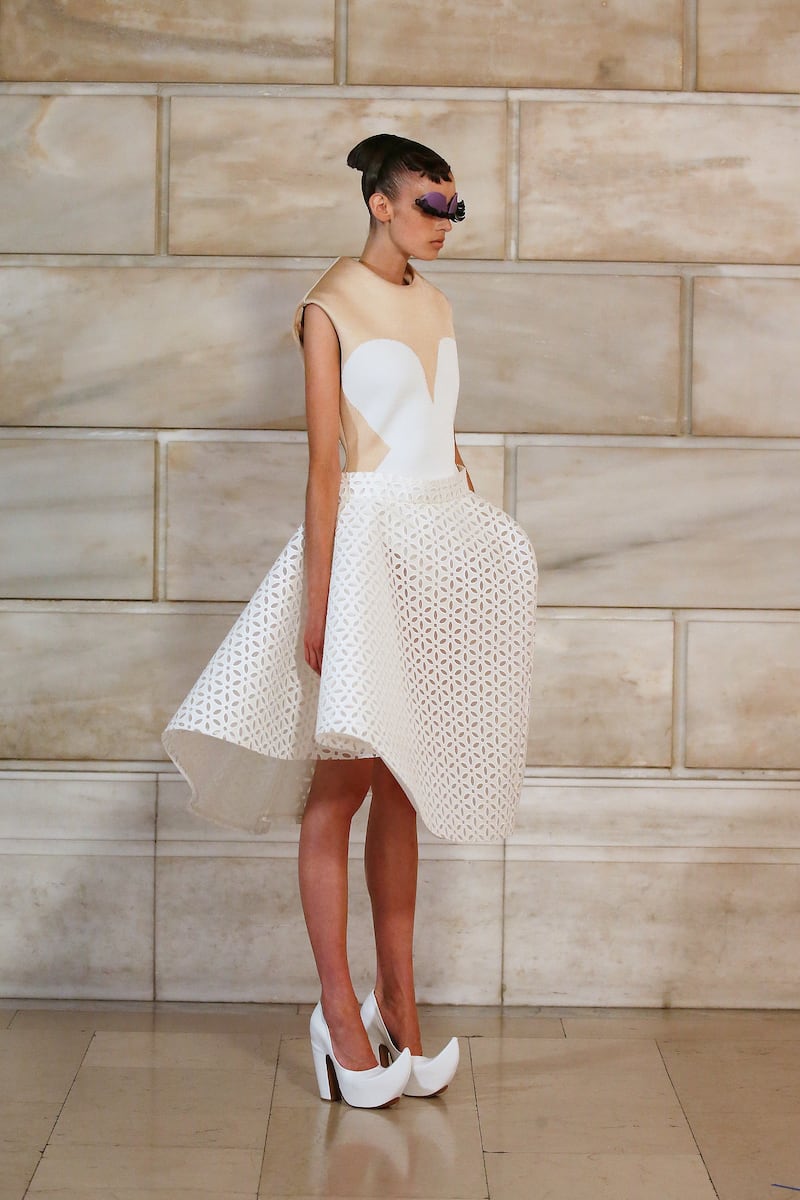
Sometimes you don’t know whether to laugh or cry. In a week that brought us a crushing far right wave in France, and the United States Supreme Court giving the former commander-in-chief (now convicted felon) unprecedented immunity, designer Marc Jacobs argued forcefully in favour of raging against the dying of the light.
“Joy, Period” was the title of his show notes, and despite our collective feeling that there is no way out of the abyss into which we are sinking, it was a beautiful balmy night in Manhattan, and Jacob’s off-schedule presentation took place again in the soaring main hall of the New York Public Library. It lasted a full five minutes — six, maybe, if you were seated at the far end of the runway. (The show began exactly at 7:30pm, and if you lived nearby, you could get home by 7:45 to hear President Biden excoriating the Supreme Court ruling.)
But as it turns out, you can cover a lot of ground in five minutes. The show began with enormous white sundresses with almost humorously distended bustlines, that managed to exhibit the will to stand up on their own, and yet also evinced a surprising lightness. It was the first of many looks that seemed to argue that perhaps we could escape — not to Canada! — but to a cartoon universe where the inhabitants would greet us wearing ginormous eyelashes glued to their heads by neon-bright strips shaped like fruit slices. (Because, why not?) Furthering this comical comic strip vibe were shoes with toes curved like Smurf hats.
Giant polka dot frocks brought to mind the wardrobe of Minnie Mouse; a tailleur owed its colour scheme — bright red big-buttoned jacket on top; swirly royal blue on the bottom — to Olive Oyl from “Popeye.” The ball gowns that closed the show had the air of Cinderella’s iconic periwinkle evening dress, here rendered in, among other combos, purple-and-fire engine red, accompanied by gargantuan white gloves that might have been purloined from a Toon Town surgical theatre.
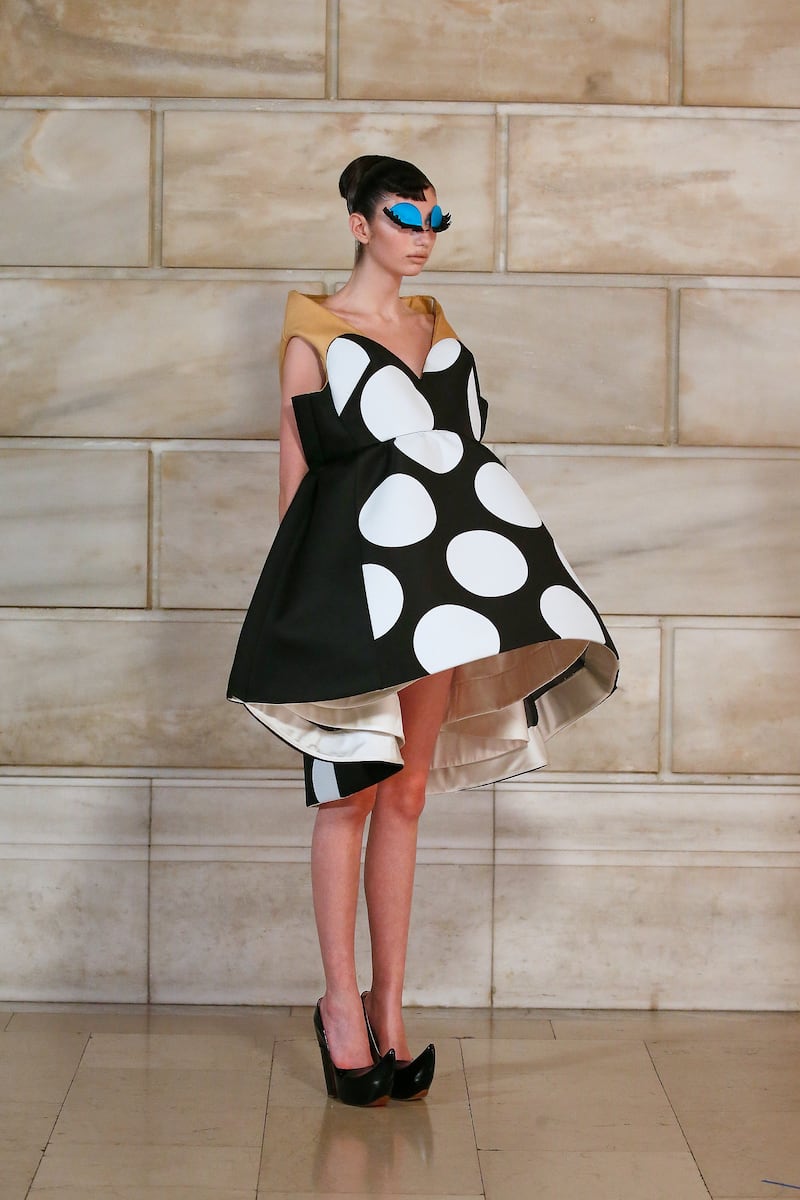
If there was a whiff of Rei Kawakubo in the odd proportions, the sometimes ungainly silhouettes that relied paradoxically on rigorous construction, this was probably no accident. “Everyone is influenced by Comme des Garçons,” Jacobs once alleged. “Anybody who is aware of what life is in a contemporary world is influenced [by Kawakubo’s brand].”
Then again, the collection may have been militantly cheerful, but the clothes were far from ridiculous. Skip the eyelashes, junk the elf shoes, and you would be perfectly happy in a pale full-skirted suit or a neat pullover or even a checked pink-and-white puffy-sleeved square-necked cropped top, a garment worthy of a latter-day Brigitte Bardot, lolling around on the beach without a care in her pretty little head.

Or maybe not. Maybe all the dots and checks in the world won’t distract her from the gravity of the matters at hand. “While the future remains unwritten, I am steadfast in my daily practice of choosing love over hate… I believe in living with authenticity — free from validation and permission of absurd conservatism and societal norms,” Jacobs wrote in his notes, a sentiment no less fierce than the hugest flapping eyelash, shielding what just might be a tear.
